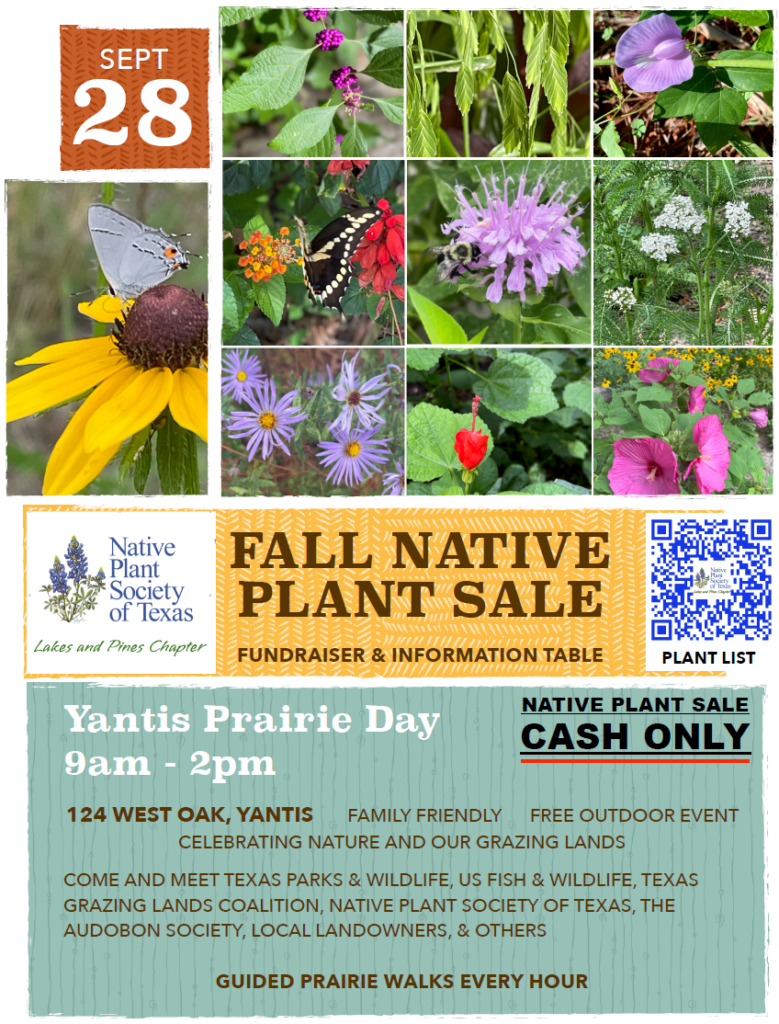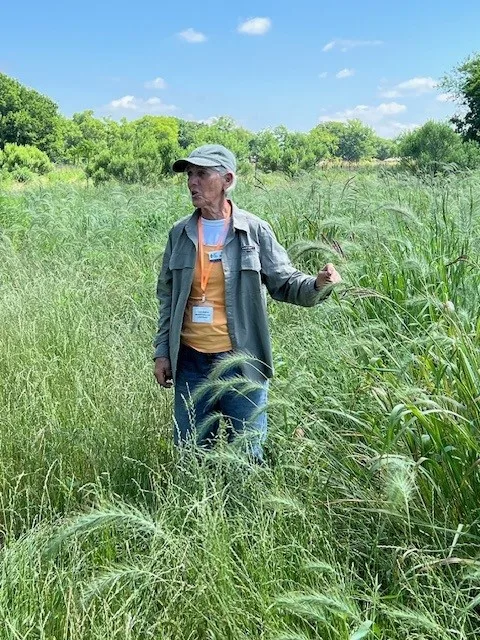
One of the many benefits of Membership in the Native Plant Society of Texas (NPSOT) is the ability to participate in our various activities and events. Member Activities include Field Trips, creating the region’s first Native Plant Demonstration Garden, Plant Swaps and Plant Sales. Below is a listing of a few of our fun activities and events. If you’d like to become a member and enjoy the full benefits of the NPSOT, click here.
Holiday Social - Board Election - Inaugural Year Celebration!
December 4, 2024
Lakes and Pines Chapter members were invited to our Members’ Board Election & Holiday Social at Sorelle Farms. We celebrated the holidays and our first year as a chapter with games and delicious appetizers brought by members.



2024 NPSOT Members Plant & Seed Swap
October 27, 2024
Three NPSOT Chapters met in Big Sandy on Sunday afternoon for our first Plant & Seed Swap. Our Lakes and Pines Chapter met with the Northeast and Tyler Chapters, talked natives, met new friends, had some snacks and enjoyed a beautiful afternoon! We’re already thinking about next year’s Plant & Seed Swap.


Sorelle Farms Fall Festival
October 19, 2024
Diana and Steven had a great day at the Fall Festival at Bob Wells Nursery at Sorelle Farms. The weather couldn’t have been more perfect for this wonderful outdoor event. It was nice to see so many families out enjoying the day together. They had some great conversations with folks about native plants. There were four legged scarecrows and two legged scarecrows – all were super cute! The two legged scarecrows were part of an art and theater program and were very creative. Happy Fall Y’all!!!


FALL 2024 NATIVE PLANT SALE
AT YANTIS PRAIRIE DAYS
September 28, 2024
The Lakes and Pines Chapter Fall 2024 Native Plant Sale was a fantastic success and it was very rewarding to see the public interest in native Texas plants. We’re already planning for our upcoming Spring 2025 East Texas Native Plant Sale so stay tuned!



WOOD COUNTY ARBORETUM
DEMONSTRATION GARDEN PHASE ONE
June 15, 2024
The Wood County Arboretum Native Plant Demonstration Garden will be created in three phases and will result in a total of three native plant gardens with walkways. Phase One consisted of conceptualizing the overall plan, designing the first garden, removing the grass and weeds, putting down a border of decorative stones, overlaying the soil with cardboard to inhibit the growth of weeds, and then layering mulch on top. In the Fall of 2024 we will begin Phase Two which will consist of planting the initial group of native plants in the first garden and the creation of the second garden. Phase Three will be done in the Spring of 2025 and will involve the design and completion of the third garden. Many thanks to our volunteers helping to make the area’s first Native Plant Society of Texas Demonstration Garden a reality!



WOOD COUNTY ARBORETUM FIELD TRIP
June 15, 2024



YANTIS PRAIRIE FIELD TRIP
May 18, 2024



SORELLE FARMS SPRING MOTHER'S DAY EVENT
May 13, 2024





